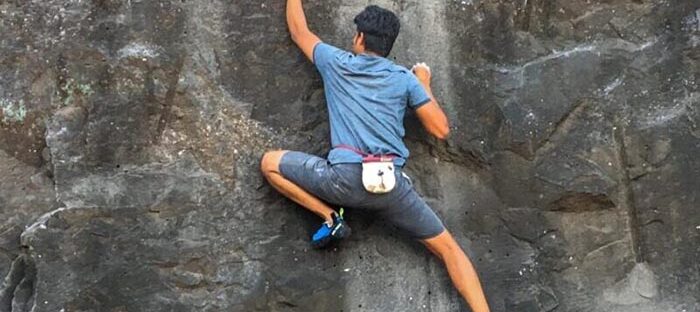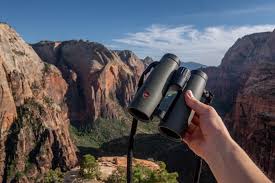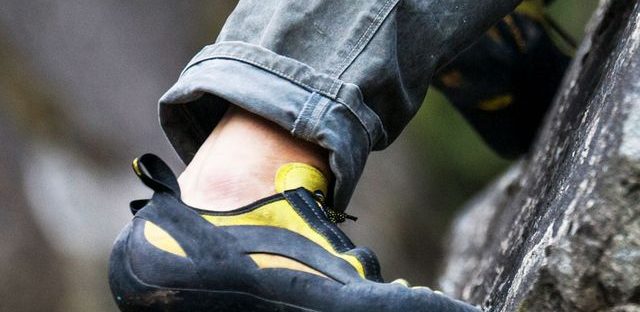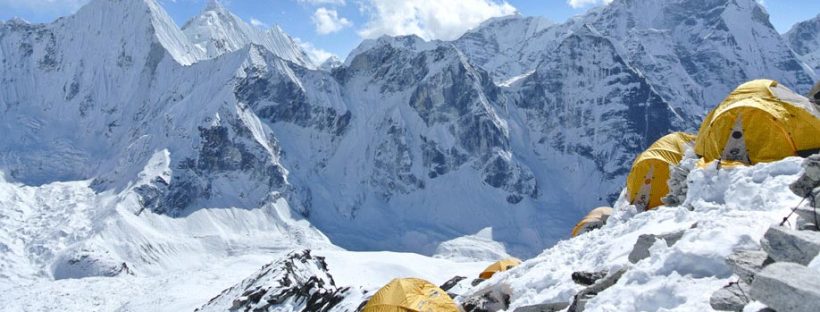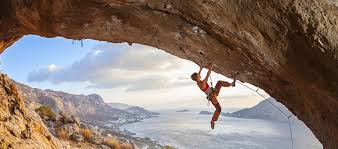If you’re looking for a way to improve both your physical and mental health, look no further than the great outdoors. Spending time in nature has been shown to have numerous benefits for your overall well-being. From reducing stress levels to improving heart health, there are plenty of reasons to get outside and get active.
Here are 10 outdoor activities that can help boost your mental and physical health. Whether you prefer a leisurely stroll through the park or an adrenaline-pumping adventure, there’s something for everyone on this list.
The Importance of Outdoor Activities
Here are some of the reasons why you should make outdoor activities a regular part of your routine:
Physical Health Benefits
Getting outside and engaging in physical activity can have a number of positive effects on your body. Some of the benefits of outdoor activities for your physical health include:
- Improved cardiovascular health
- Increased strength and endurance
- Lowered risk of chronic diseases such as diabetes and heart disease
- Improved sleep quality
- Stronger immune system
Mental Health Benefits
Spending time in nature can also have a big impact on your mental health. Here are some of the ways that outdoor activities can benefit your mind:
- Reduced stress and anxiety
- Improved mood and feelings of happiness
- Increased creativity and cognitive function
- Boosted self-esteem and confidence
- Improved quality of life
Walking in Nature
Walking in nature is a simple and enjoyable way to boost your mental and physical health. It’s an activity that can be done alone or with friends and family, and it doesn’t require any special equipment or skills.
When you walk in nature, you get to enjoy the fresh air, the beautiful scenery, and the sounds of birds and other wildlife. This can help you feel more relaxed and reduce stress levels. Walking also increases your heart rate and gets your blood flowing, which can improve your cardiovascular health.
One of the great things about walking in nature is that it’s a low-impact activity, which means it’s easy on your joints. This makes it a great option for people of all ages and fitness levels.
If you’re looking to make your nature walks more challenging, you can try walking on different terrains, such as hills or rocky paths. This will engage different muscles in your body and provide a more intense workout.
To get the most out of your nature walks, try to make them a regular part of your routine. Aim for at least 30 minutes of walking per day, or more if you can. You can also use walking as a way to explore new areas and discover hidden gems in your local community.
Climbing
Climbing is a great outdoor activity that can help you boost both your physical and mental health. It is a full-body workout that requires strength, balance, and endurance. Climbing can also help you improve your problem-solving skills and boost your confidence.
When you climb, you use your arms, legs, and core muscles to pull yourself up and maintain your balance. This helps you build strength and endurance, which can improve your overall physical fitness. Climbing also requires you to focus on your movements and your surroundings, which can help you improve your concentration and reduce stress.
If you are new to climbing, it is important to start with easy routes and work your way up gradually. You should also make sure that you have the right equipment, including a harness, climbing shoes, and a helmet. It is also a good idea to climb with a partner or a group, so you can learn from others and stay safe.
Climbing is a fun and challenging outdoor activity that can help you improve your physical and mental health. So why not give it a try?
Cycling
Cycling is a great way to improve your physical and mental health while enjoying the great outdoors. Whether you prefer mountain biking or road cycling, there are plenty of benefits to be gained from this fun and challenging activity.
Mountain Biking
Mountain biking is a thrilling way to explore the great outdoors and challenge yourself physically. Riding on rugged terrain can help improve your balance, coordination, and endurance. It’s also a great way to get a full-body workout, as it engages your legs, core, and upper body.
When mountain biking, it’s important to wear protective gear such as a helmet, gloves, and knee pads. It’s also a good idea to start on easier trails and work your way up to more difficult ones as your skills improve.
Road Cycling
Road cycling is a great way to improve your cardiovascular fitness and build endurance. It’s a low-impact activity that’s easy on your joints, making it a great choice for people of all ages and fitness levels.
When road cycling, it’s important to wear appropriate gear such as a helmet, cycling shorts, and a jersey. You should also make sure your bike is properly fitted to your body to prevent discomfort or injury.
Whether you prefer mountain biking or road cycling, both activities offer a fun and challenging way to improve your physical and mental health. So grab your bike and hit the road or trails for a great workout and a fun adventure.
Gardening
Gardening is an excellent activity for both mental and physical health, here are some reasons why:
- Physical Exercise: Gardening can be an excellent form of physical exercise. It involves many movements such as bending, digging, and lifting that can improve your flexibility, strength, and endurance.
- Stress Relief: Gardening can be a great way to relieve stress. It gives you a chance to relax and unwind while also providing a sense of accomplishment and satisfaction.
- Mental Health: Gardening can also have a positive impact on your mental health. It can help reduce symptoms of anxiety and depression, improve your mood, and boost your self-esteem.
- Fresh Produce: Gardening can provide you with fresh fruits, vegetables, and herbs that are free from harmful chemicals. You can enjoy the taste and nutritional benefits of fresh produce while also saving money on groceries.
- Connecting with Nature: Gardening gives you an opportunity to connect with nature, which can have a calming effect on your mind and body. It can help you feel more grounded and connected to the world around you.
For those who are new to gardening, websites such as Gardening Know How, Bonnie Plants, and Backyard Gardeners Network can provide a great starting point. Regardless of whether you have a large garden or just a few pots on your balcony, gardening is a fun and rewarding way to spend time outdoors. With the right resources and a bit of patience, anyone can develop a green thumb and enjoy the beauty and satisfaction of growing their own plants.
Bird Watching
Bird watching is a great outdoor activity that can boost both your mental and physical health. It is a peaceful and relaxing activity that allows you to connect with nature and enjoy the beauty of birds. Here are some benefits of bird watching:
- Reduces stress: Watching birds can help you relax and reduce stress levels. It is a calming activity that can help you forget about your worries and focus on the present moment.
- Improves mental health: Bird watching can also improve your mental health by reducing symptoms of anxiety and depression. It can boost your mood and increase feelings of happiness and well-being.
- Increases physical activity: Bird watching involves walking and hiking, which can help you stay active and improve your physical health. It is a low-impact activity that can be enjoyed by people of all ages and fitness levels.
- Boosts cognitive function: Bird watching can also improve your cognitive function by increasing your attention span and memory. It can also help you learn more about different bird species and their behaviors.
To get started with bird watching, all you need is a pair of binoculars and a field guide. You can also join a local bird watching club or group to learn more about bird identification and behavior. So grab your binoculars and head out into nature to enjoy the beauty of birds!
Hiking
Day Hiking
Day hiking is a great way to explore local trails and get some exercise. It’s a low-impact activity that can be enjoyed by people of all fitness levels. Here are some benefits of day hiking:
- Improves cardiovascular health
- Reduces stress and anxiety
- Boosts mood and mental well-being
- Provides a sense of accomplishment
When planning a day hike, be sure to bring plenty of water, snacks, and sunscreen. Wear comfortable shoes and dress appropriately for the weather. You can also use hiking poles to help reduce strain on your joints and improve balance.
Backpacking
Backpacking is a more challenging form of hiking that involves carrying all your gear on your back and camping overnight on the trail. It requires more preparation and experience, but can provide a deeper connection to nature and a greater sense of accomplishment. Here are some benefits of backpacking:
- Increases endurance and strength
- Improves problem-solving skills
- Boosts self-confidence and resilience
- Provides a sense of adventure and exploration
When planning a backpacking trip, be sure to research the trail and check for any permits or regulations. Pack lightweight gear and bring plenty of food and water. Be prepared for changes in weather and terrain, and always practice Leave No Trace principles to protect the environment.
Fishing
Not only is fishing a fun and enjoyable activity, but it also has several health benefits. Here are some of the ways that fishing can boost your mental and physical health:
- Reduces stress: Fishing requires patience and focus, which can help you clear your mind and reduce stress levels. Being out in nature can also have a calming effect on the mind and body.
- Improves cardiovascular health: Fishing involves walking, casting, and reeling, which can provide a moderate level of physical activity and help improve your cardiovascular health.
- Boosts vitamin D levels: Spending time outdoors while fishing can help increase your vitamin D levels, which is important for maintaining strong bones and a healthy immune system.
- Promotes mindfulness: Fishing requires concentration and focus, which can help you become more mindful and present in the moment.
Running
Here are some benefits of running:
- Running can improve your cardiovascular health and help you build endurance.
- It can help you maintain a healthy weight and reduce your risk of chronic diseases such as heart disease, diabetes, and high blood pressure.
- Running can also improve your mood and reduce stress levels by releasing endorphins, which are natural painkillers that can create a sense of well-being.
To get started with running, you’ll need a good pair of running shoes and comfortable clothing. Start with a slow, steady pace and gradually increase your speed and distance over time. You can also try incorporating interval training or hill repeats to challenge yourself and improve your fitness.
Running can be a solo activity, but it can also be a great way to socialize and meet new people. Consider joining a local running group or signing up for a race to stay motivated and connected with other runners.
Remember to always listen to your body and take breaks when needed. Running should be enjoyable and not feel like a chore. With consistent effort and dedication, running can become a fun and rewarding part of your outdoor routine.
Outdoor Yoga
Here are some reasons why outdoor yoga is a great idea:
- Fresh air: Practicing yoga outside allows you to breathe in fresh air, which can help you feel more energized and alert.
- Connection to nature: Being in nature can help you feel more connected to the world around you, which can be calming and grounding.
- Vitamin D: Practicing yoga outside can also help you get some much-needed vitamin D from the sun, which is important for bone health and can help boost your mood.
- Variety: Practicing yoga outside can provide a change of scenery and a break from your usual routine, which can help keep things interesting and engaging.
When practicing outdoor yoga, it’s important to find a quiet and peaceful spot where you won’t be disturbed. You can bring a yoga mat or practice on a towel or blanket. Here are some yoga poses that are great for practicing outside:
- Tree Pose: This pose helps improve balance and stability, and can be done while standing on uneven ground.
- Downward-Facing Dog: This pose stretches the hamstrings and calves, and can be done with your hands on a tree or rock for added stability.
- Warrior II: This pose strengthens the legs and core, and can be done with a beautiful view in front of you.
Outdoor Photography
Outdoor photography is a great way to get outside, explore your surroundings, and improve your mental and physical health. Whether you’re a beginner or an experienced photographer, there are plenty of opportunities to capture stunning images in nature.
One of the benefits of outdoor photography is that it encourages you to slow down and be more mindful of your surroundings. As you search for the perfect shot, you’ll become more attuned to the small details of your environment, such as the way the light filters through the leaves or the patterns in the clouds.
In addition to being a calming and meditative activity, outdoor photography can also be a great workout. As you hike to different locations and carry your gear, you’ll be getting a low-impact cardio workout that can help improve your cardiovascular health and burn calories.
To get started with outdoor photography, all you need is a camera or smartphone and a sense of curiosity. Look for interesting subjects, such as flowers, wildlife, or landscapes, and experiment with different angles and lighting conditions. Don’t worry about getting the perfect shot – the process of exploring and experimenting is just as important as the final image.
Here are some tips to help you get the most out of your outdoor photography experience:
- Bring a tripod or stabilizer to help you capture sharp images.
- Experiment with different camera settings, such as aperture and shutter speed, to create different effects.
- Look for interesting patterns, textures, and colors in your environment.
- Use natural light to your advantage – early morning and late afternoon light can create beautiful, soft lighting conditions.
- Don’t be afraid to get up close and personal with your subjects – macro photography can reveal fascinating details that are often overlooked.
Conclusion
In conclusion, engaging in outdoor activities can have a significant positive impact on both your mental and physical health. By spending time in nature and being active, you can reduce stress, improve your mood, and boost your overall well-being.
The benefits of outdoor activities are numerous and well-documented. So, why not take advantage of the natural world around you and start reaping the rewards for your mental and physical health?
